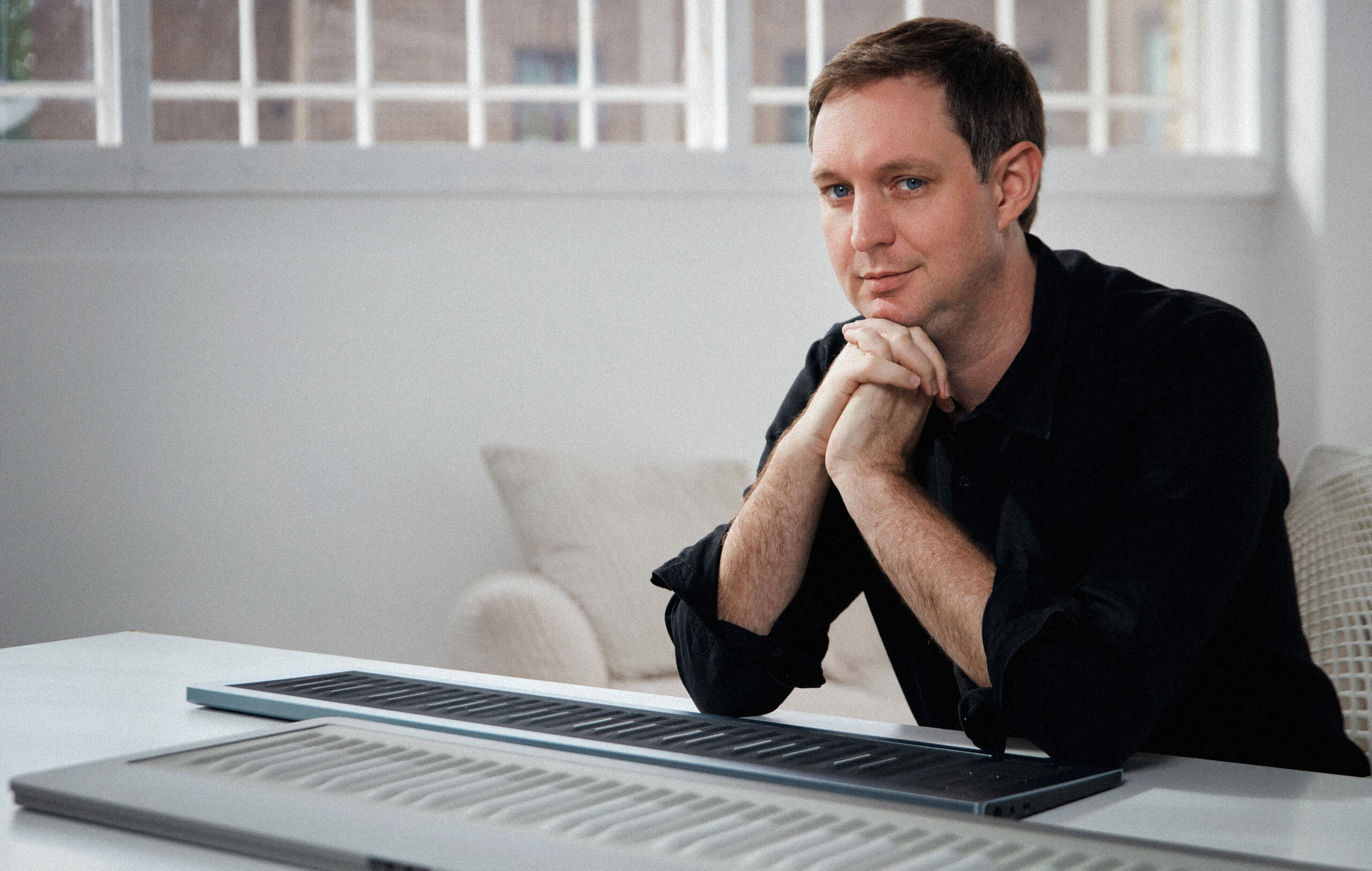
ROLI CEO and Seaboard creator, Roland Lamb: “We made thousands of assumptions about the market and the world. And most of them proved to be right”
ROLI has seen more hype, renown and turbulence over the last few years than many companies do over decades. Now, after a fallow period of two years, founder and CEO Roland Lamb has a message: the Seaboard is back, and it’s here to stay.
Image: Joseph Bishop for MusicTech
It’s 2013: an intriguing new developer has just announced a novel instrument called the Seaboard GRAND. “This exciting new instrument has just been unveiled by design-led technology start-up ROLI,” reported MusicTech in March of that year. “A radically new kind of musical instrument and digital controller that reimagines the most iconic of musical instruments – the piano. We’re very excited by this new instrument and hope to get our hands on one soon.”
- READ MORE: Plug-ins I Actually Use: Annie Elise
ROLI launched the Seaboard GRAND in September 2014, immediately assuming flagship status for the burgeoning concept of MPE – MIDI Polyphonic Expression. Sliding, bending and modulating with different player movements, it promised new levels of control and expression, not to mention placing an Apple-esque premium on sleek design.
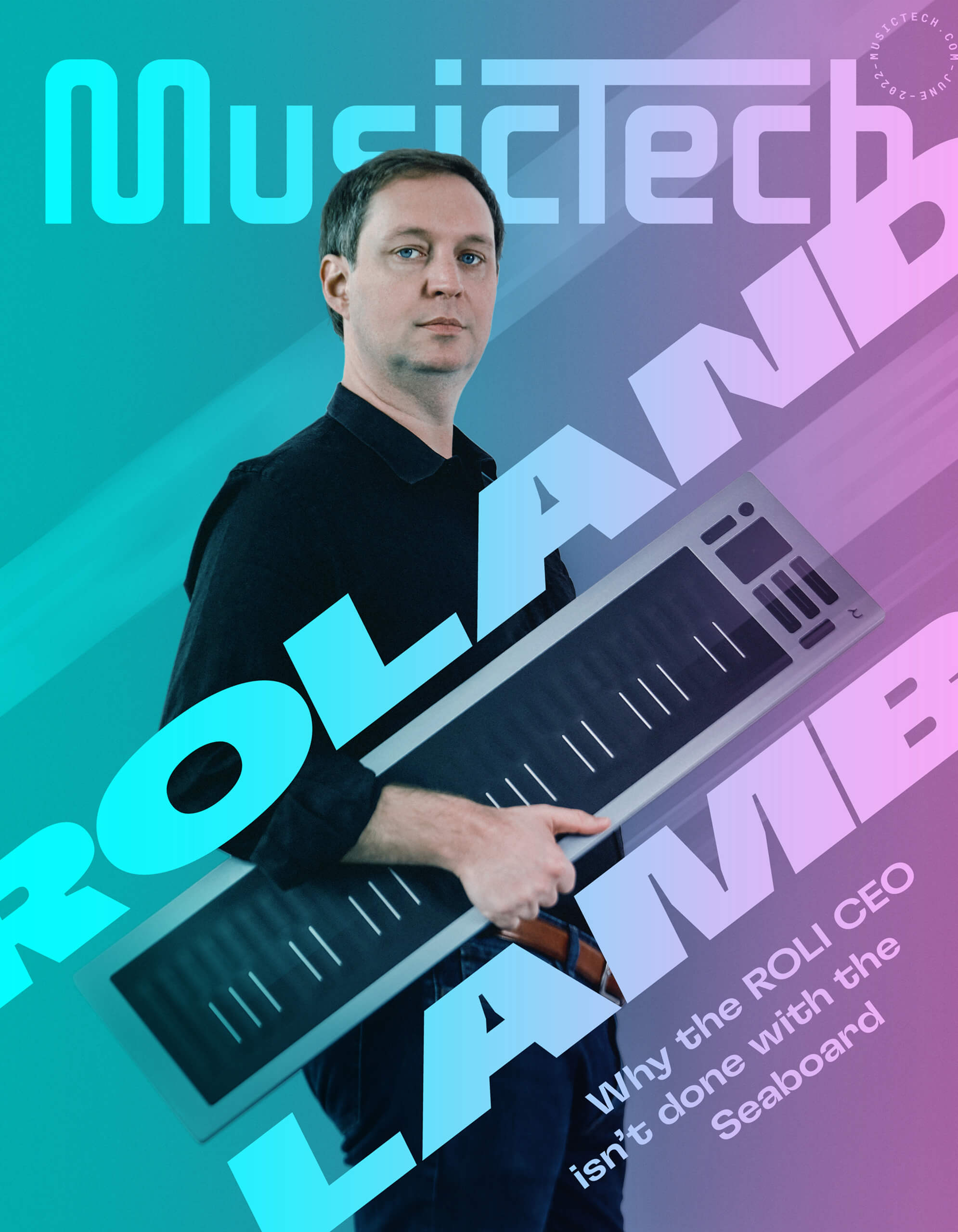
“From the very beginning – like, the very first day that I put my first video about the Seaboard out – we had incoming engagement and interest,” Roland Lamb remembers eight years on, adding, somewhat bashfully, “from, you know, global stars. People just immediately wanted it. They wanted to get it quickly, they wanted to test it, they wanted to know what we were doing. People were really excited about it.”
The Seaboard did indeed make proponents of some stratospherically successful musicians, from Grimes to will.i.am. Hans Zimmer is reported to have personally called to ask for one upon its release, shortly before CNN ran a segment titled Hans Zimmer Plays The Piano Of The Future. Stevie Wonder was seen testing one out at The NAMM Show 2014, with a video later emerging of the legend leading a Seaboard-backed singalong of Sir Duke in the ROLI room at NAMM 2016.
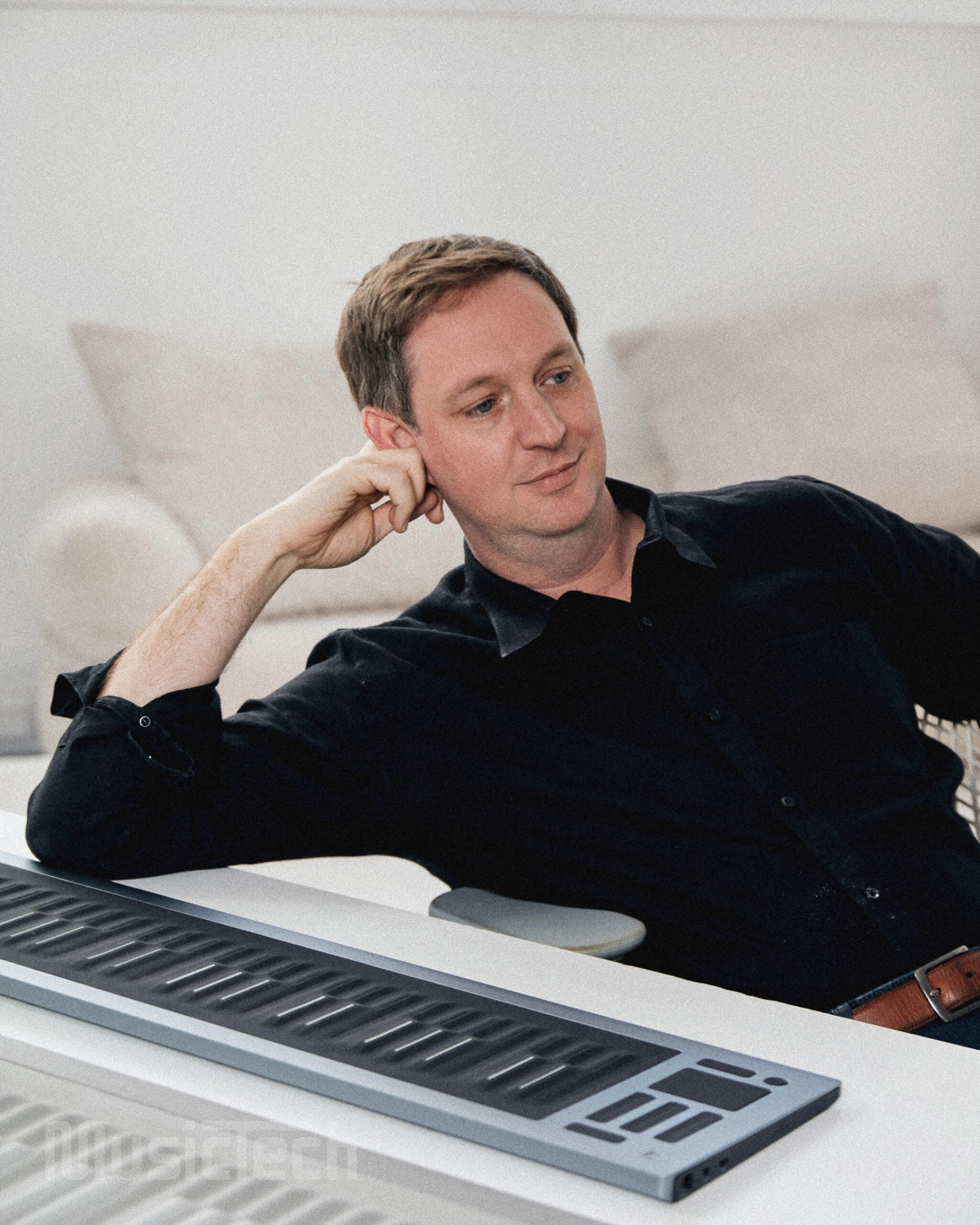
“I didn’t expect to become an inventor or an entrepreneur,” says Lamb. Boyish yet unassuming and urbane, the American-born, London-based 43-year-old avoids self-aggrandising language in favour of measured and articulate reflections. His personal journey into music technology is also, surely, quite unlike that of anybody else in the industry.
“My main interests previously had been in philosophy and religion,” he says. “I spent some time studying and living as a Buddhist monk in Japan, having moved there when I was 17. Then I came back to study classical Chinese and Sanskrit [at Harvard], because I was interested in Buddhist history and philosophy. I was basically planning to do my PhD in that field. Then, I won a scholarship that allowed me to study anything, anywhere in the world.”
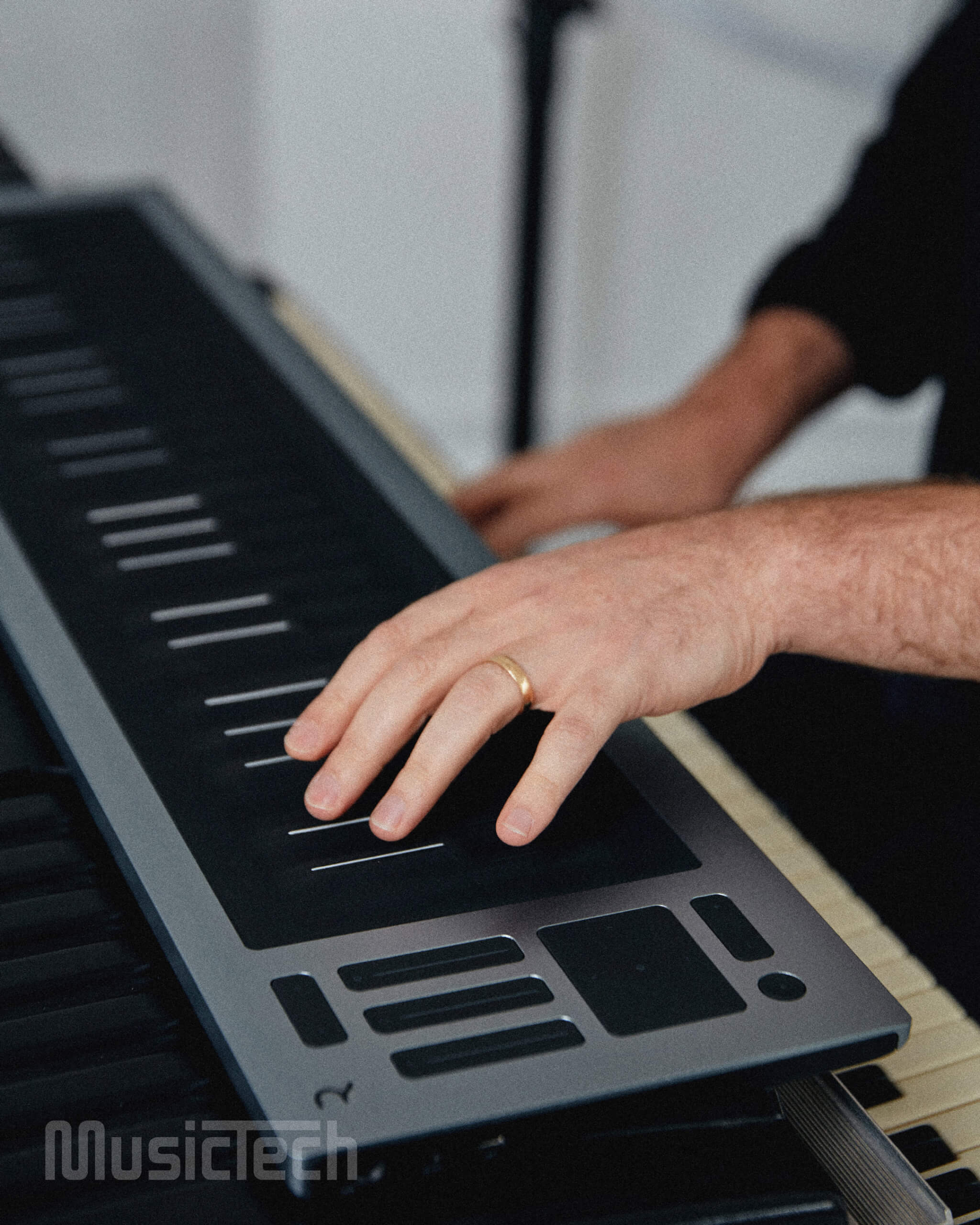
Lamb decided on a design programme at London’s Royal College of Art and it was here he would experience ROLI’s genesis moment. “I had no background in design, no skills,” he says. “And everyone else in the programme knew what they were doing. I felt like a fish out of water. Early on, I was sitting in the RCA cafe playing the piano. I had this thing that I would do as I was playing the piano, which was to move my hands on the keyboard, as if I was bending the pitch. I’d always wanted to sing, but I wasn’t a particularly good singer. I wanted to make the piano sing. I was interested musically in the ways you can essentially simulate pitch bend on the piano. For example, if you play a trill, you’re almost creating a little bend between the notes. I had these sorts of ideas early on; I love Thelonious Monk, and I remember someone said that he was always trying to find the space between the white and the black notes.

“Monk would play all of these little chromatic step chords, where he played two adjacent notes at the same time. And it has this interesting, almost pitch bend-like effect in his playing, that musically was magical for me. So I thought, ‘well, I’m at a design programme, so why don’t I just make a piano that can do that?’ I started designing a new sort of mechanical keyboard that would allow you to move or bend.”
The Seaboard GRAND would win the Design Museum’s 2014 Design Of The Year award, and won Lamb the Swarovski Emerging Talent Medal at that year’s London Design Medal Dinner. In 2017, Ryan Gosling was seen soloing on a Seaboard alongside John Legend in the movie La La Land. Later that year, fresh off the back of a $27m fundraising round, Lamb took the stage at the Hackney Empire to welcome Pharrell Williams to the ROLI team as chief creative officer, with Williams having already invested an undisclosed amount in the start-up. “When we met it felt like we were on the same page,” An excited Lamb told the BBC at the time, citing a mutual interest in the democratisation and accessibility of music and music technology.
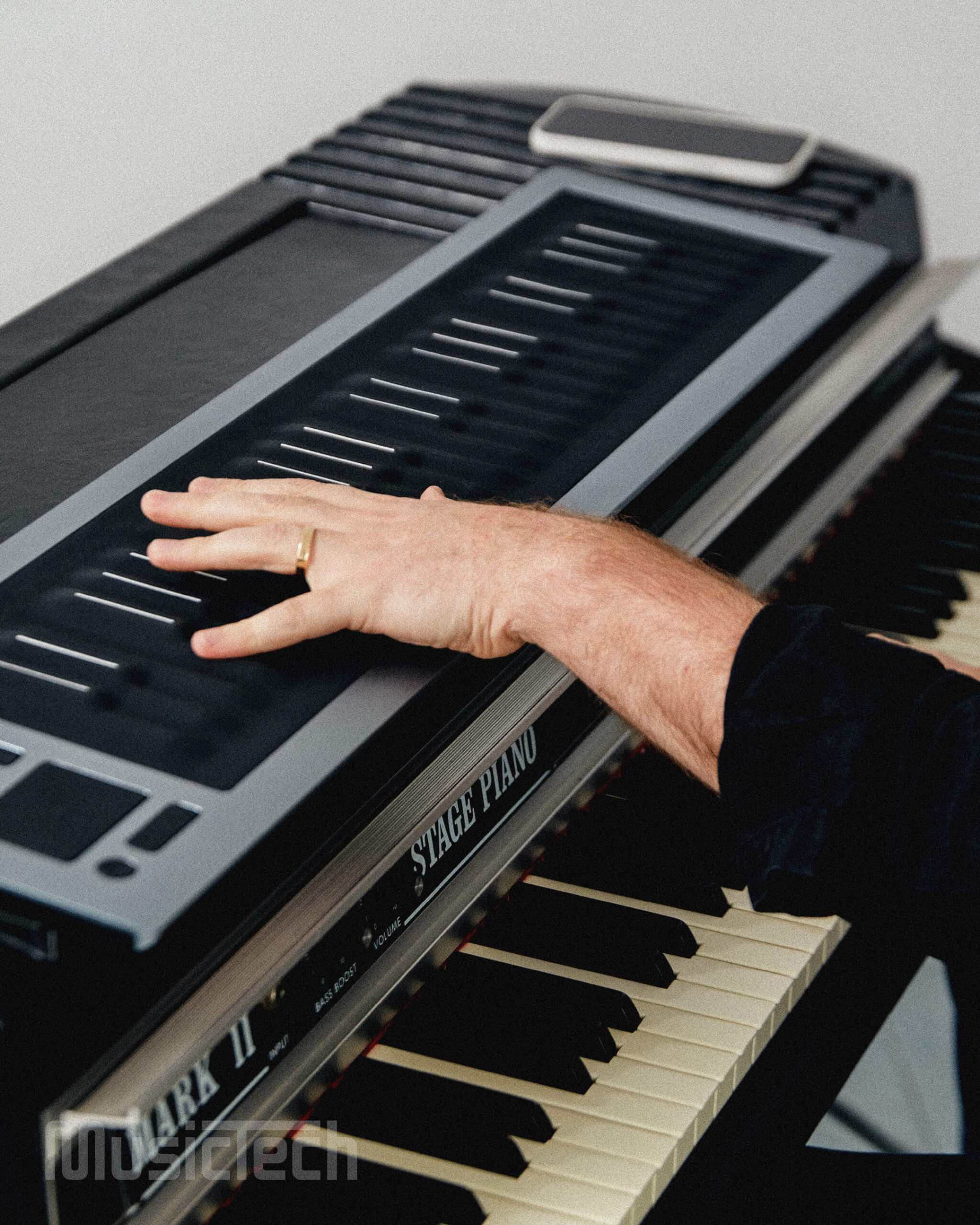
Next in 2017 came the Seaboard RISE in 25 and 49-key variations, then the more modular BLOCK. In 2019, ROLI launched sister brand LUMI, an education-focussed range of light-up keyboards with an accompanying app. It looked like there was no stopping the company.
“We stuck our neck out,” says Lamb. “We were doing something really different. Really innovative. And that got a lot of people excited. We did a good job of building a good sense of character for the brand, about doing something really new and ahead of its time.
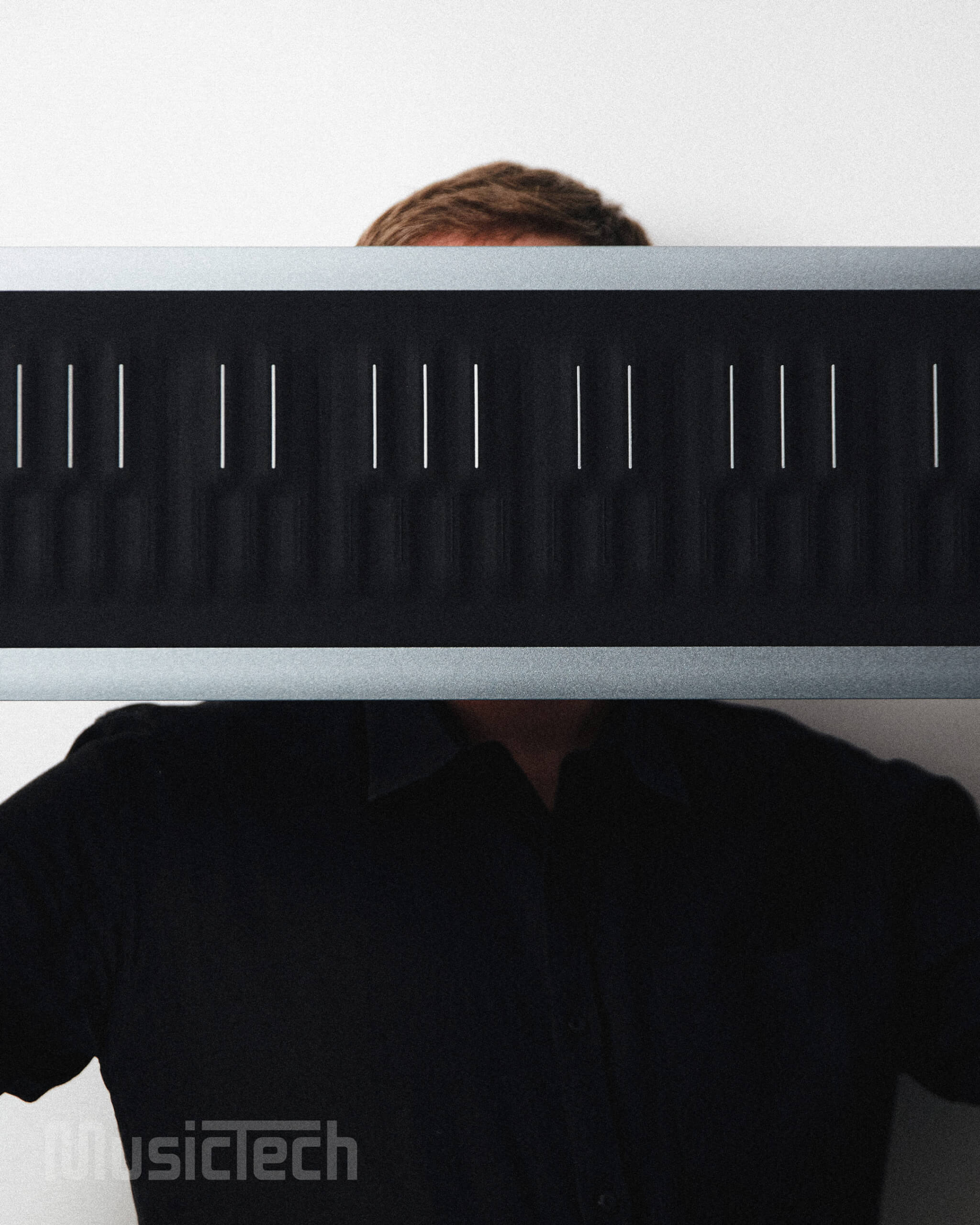
“But it was ahead of its time in many different ways. And some of those ways were commercially challenging for us. People were really excited about the potential. But to get these new MPE-based products to be as mature as MIDI-based products is a long process. The early adopters loved it, but then we got to the next wave, and people were like, ‘wait a minute, this isn’t as much of a plug-in-and-play kind of experience as I would have if I just got a MIDI controller.’
“I think there’s a conservative element to music production; people who, in some ways, are not open to innovation. They can be sceptical, basically, and I think some of that scepticism is justified. Because it’s really hard to pull off a great new product. It’s hard to be really innovative.”
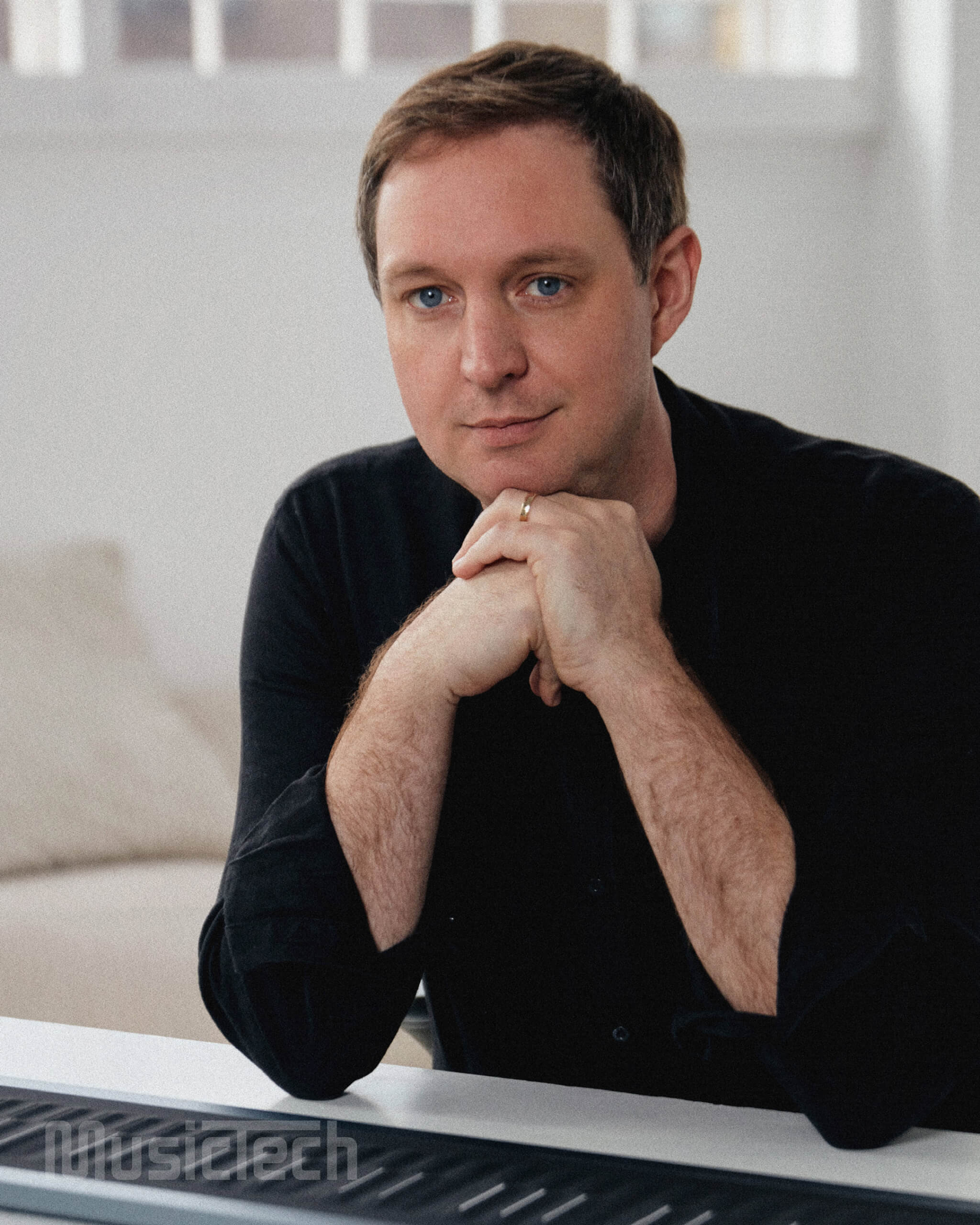
Summarised so, you’d be forgiven for thinking the developer jumped into the MPE format with little to no forethought. But it’s not as if Lamb and his team weren’t aware in those days of the need for a long-game approach. “We are still only about 10 per cent of the way towards realising the full potential of the Seaboard,” he told MusicTech in early 2016. The Seaboard is just the very beginning of what we will build.”
Despite ROLI’s astonishing talent for creating a buzz and raising venture capital, momentum on the front line began to stutter. It became clear that the company’s investors were not seeing adequate returns, with accounts filed in 2019 reporting substantial pre-tax losses. In late 2018, the decision was made to discontinue the Seaboard GRAND, and in September 2021, ROLI filed for bankruptcy, relaunching and rebranding as Luminary with a focus on the LUMI range. Lamb looks back on this period with gravitas, quick to take responsibility but equally not punishing himself for stepping out boldly.
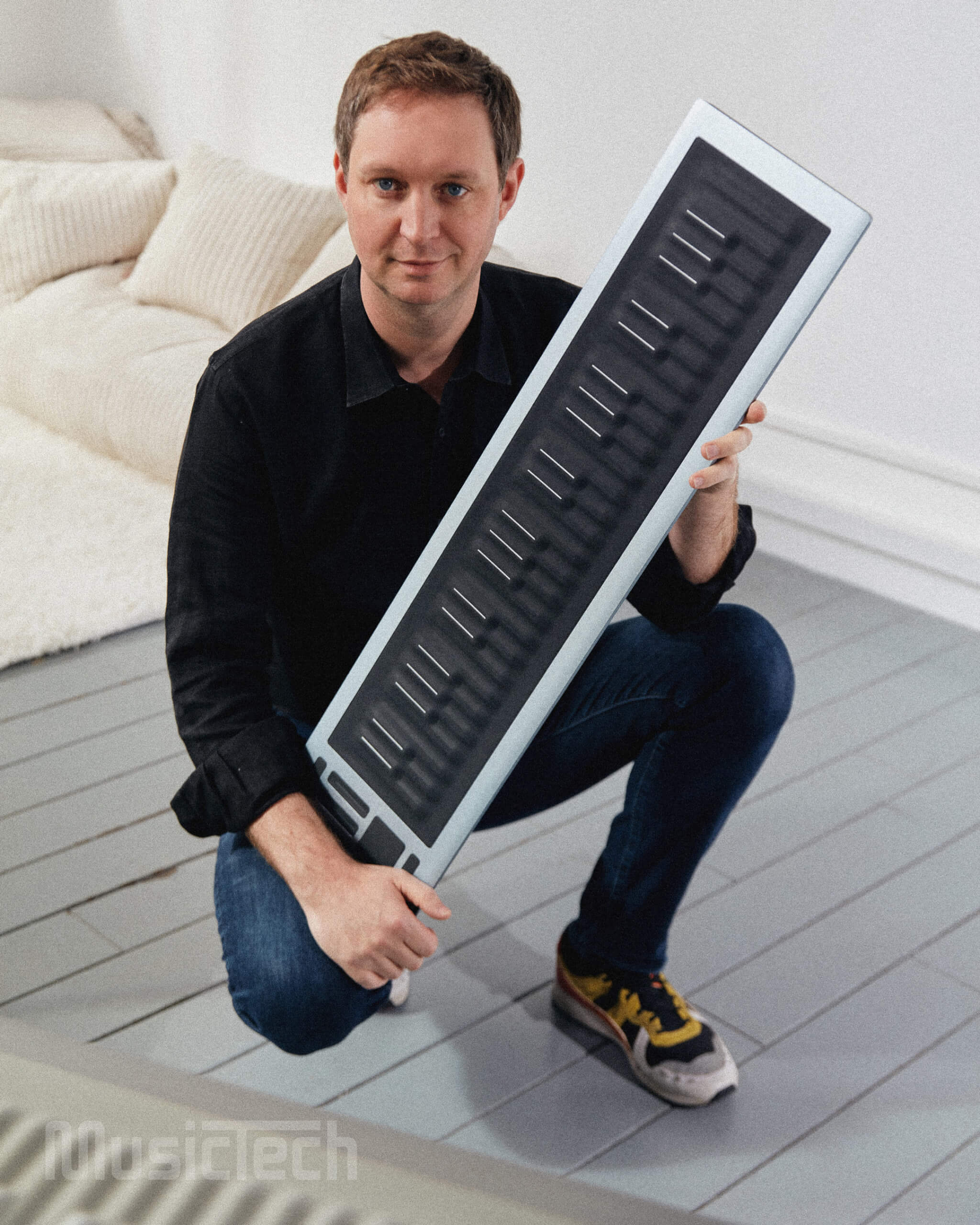
“With the clarity of hindsight, there are two main reasons why we’ve had a bumpy road. One is this idea of us being ahead of our time. And the other is mistakes and miscalculations that I made along the way. I think those are par for the course, when you try to do something really innovative. You will make mistakes, and I was a first time CEO. But fundamentally, I think it just boils down to those two things.
“We made thousands and thousands of different kinds of assumptions, you know, guesses about the market and guesses about the world. And most of them proved to be right. And a very small minority of them proved to be wrong. But those ones were costly.”
But Lamb wasn’t ready to throw in the towel. At some point during that interim, the company made the subtle but telling shift to be registered as Luminary ROLI Ltd, and in March of this year announced the Seaboard RISE 2.

“We were determined,” says Lamb, “and we are determined to do it. And the good news is, the time of MPE and the time of this innovation has now really come. Even the processing capability of most people’s computing devices now is sufficient to handle multi-dimensional control of a polyphonic instrument, which was not always the case years ago.
“Within a company, one of the big priorities is making things. Another priority is selling things. And they’re both really important. We’ve philosophically come to the position that of those two priorities, by far the most important is making things really, really well. Because if you do that, then people love the products and talk about them. Part of the opportunity that we had, with this reset that we went through, was to make sure that we were focusing on getting all of the product foundations right.”
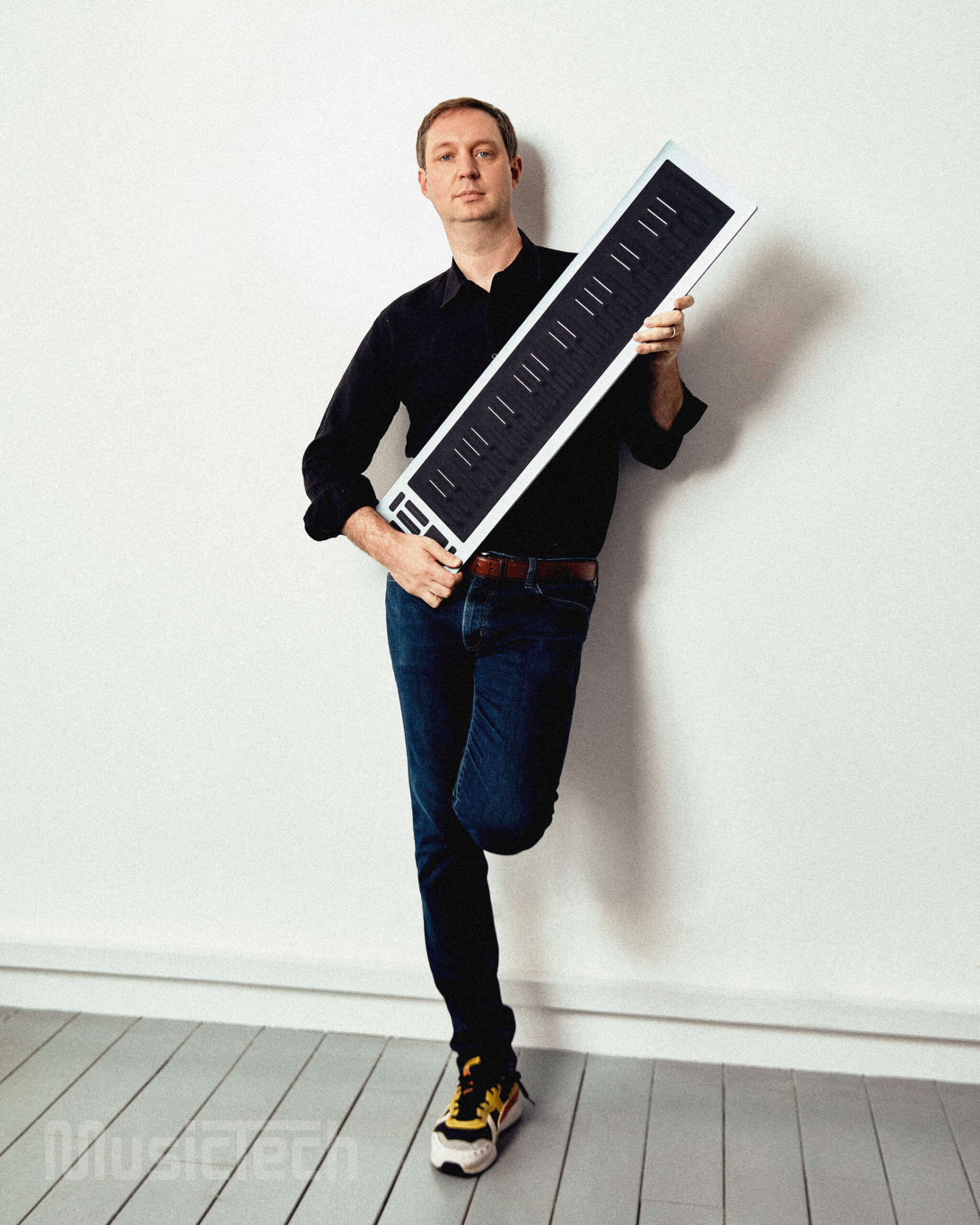
Seaboard RISE 2, due for release in November 2022, represents a significant step forward for ROLI when it comes to the essential relationship between player and instrument. Redesigned around a platinum blue anodised aluminium chassis, the RISE 2 hosts Precision Frets for enhanced tactile feedback – a small feature on paper but major as far as Lamb is concerned, following extensive research about the cognitive science of music and the principles of proprioception.
“One fact about all traditional musical instruments that you can learn to play at a virtuosic level is that you can play them with your eyes closed. And with the first generation Seaboards you can, to some extent, but you don’t get quite enough tactile feedback about where your fingers are on the keys.
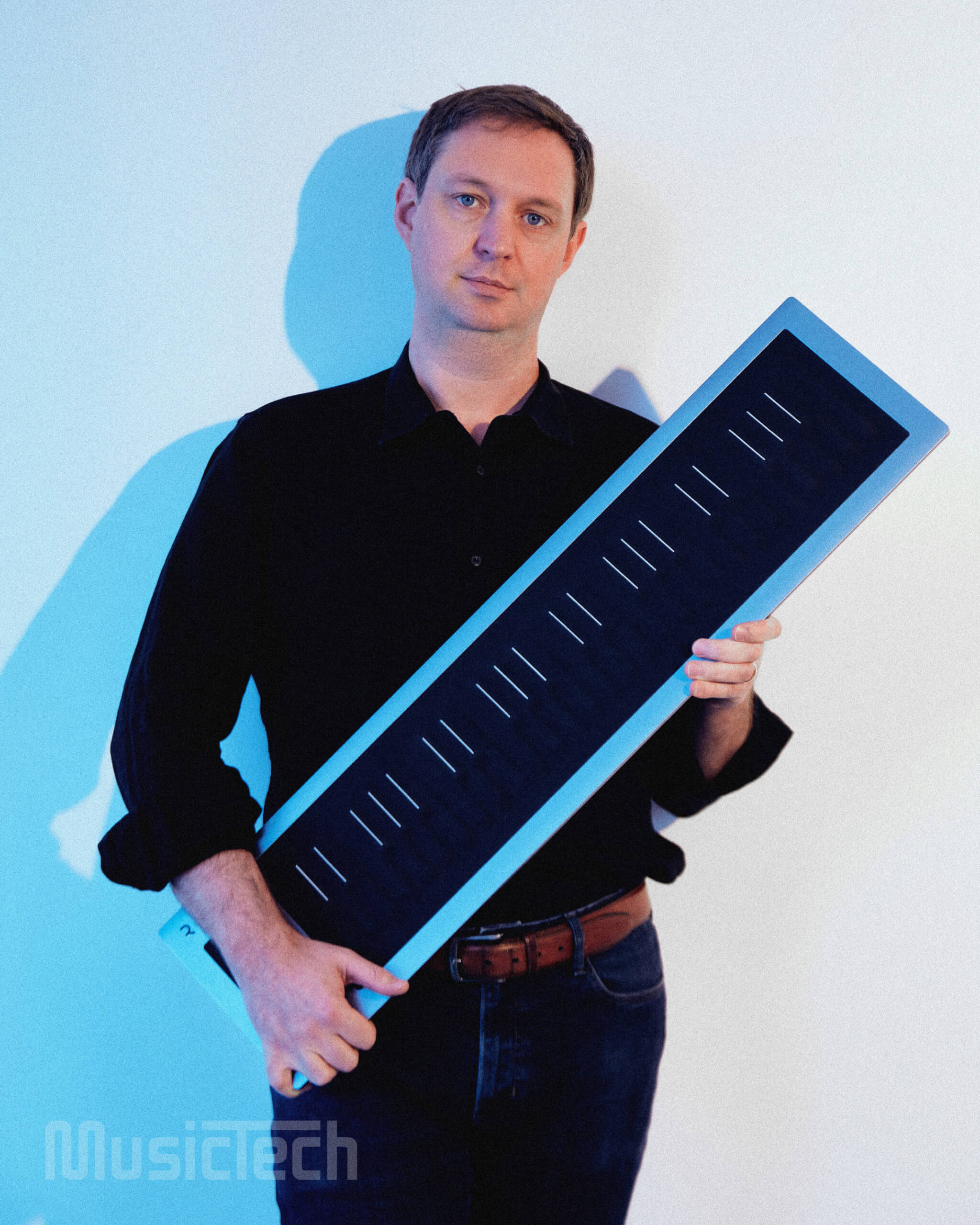
“But if you can just feel if you’re actually in the right position, based on your hands and your gestures and the tactile feedback, you can basically activate a next level of virtuosity with the instrument. And that’s the case with the Seaboard RISE 2. In one way, it’s a very small design change; these are all just little iterations. But in another way, it’s starting to cross this fundamental barrier from being an extraordinary device and controller idea to something that can actually live as a virtuosic instrument.”
Lamb is convinced that the key to creating an instrument for the ages lies in this realm of proprioception, tactility and the cultivation of instinct. He’s right about the RISE 2’s potential for virtuosity; to improve the instrument’s ‘feel’ is to improve its musicality and therefore its potential to create players. By contrast, it is less likely, for example, to have a virtuoso modular synthesist; not because it requires any less skill to master, but because the skill required originates from a different part of the player. Even the most experienced players of that instrument need to engage their eyes and brains, in other words their frontal cortex, to create music with it.
“For an instrument to be successful, musicians need to be able to commit their lives to it,” says Lamb. “They need to decide, ‘I’m a Seaboardist.’ And that’s a big decision to make about your time. You need to feel that the instrument is ready to meet you. And, there’s a lot of people for whom the Seaboard RISE 1 was at a point where they were ready to do that. And there are some amazing Seaboardists in the world now. But the Seaboard RISE 2 is going to be able to meet a lot more people where they are, because it’s that much easier to play.”
Are Stevie Wonder and Grimes on board this time as they were before? Pharrell Williams’ role in the company is at present unconfirmed. Lamb seems not to mourn celebrity endorsements, though, signalling something of a shift in priorities. “Initially, I felt that artists would be an important and exciting way to kind of get the word out and to build the brand. And to some extent that was true. But the Seaboard was far enough ahead of its time that we didn’t necessarily need to get the word out that much. We needed to just really get the products right and continue iterating on that.
“The much more effective and important relationships ended up being with the people who became more like virtuosos, like Marco Parisi. He became so good at playing the Seaboard and so good at demonstrating it to people. He could show people what the Seaboard could do but also he could feed back into the development process and help us to understand how to make it better. I think, over time, we just realised that those relationships were the really important ones. And whether or not someone was a kind of global star or not was less important, ultimately.”
We’re yet to see how the Seaboard RISE 2 will fare. Regardless of one’s persuasion when it comes to novel designs in the world of music production, Lamb’s diligent ambition is laudable and his thesis one that should be heard. “In 50 years, people are not going to be making music the way they are today. It’s going to be a completely different kind of setup. We want to be thinking about that, anticipating that, pioneering that where we can.”
Learn more about the upcoming Seaboard RISE 2 at roli.com.